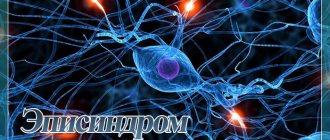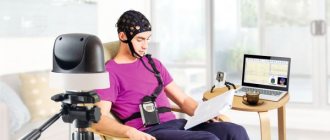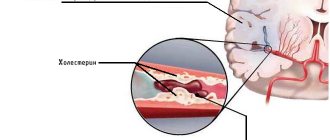Juvenile myoclonic epilepsy - symptoms and treatment
The main diagnostic criterion for the disease is the presence of myoclonic seizures.
History taking
At the appointment, the doctor asks about unusual sudden conditions:
- tremors in the body;
- déjà vu - a state in which a person feels that he has once been in a similar situation or place;
- loss of consciousness, etc.
Patients may not pay attention to such symptoms and consider them to be their peculiarity. Absence seizures and generalized tonic-clonic seizures with loss of consciousness, especially during sleep, they may completely forget. Therefore, when collecting anamnesis, it is important to find out the circumstances of the attack not only from the patients themselves, but also from relatives and eyewitnesses.
Electroencephalogram (EEG)
The main way to diagnose epilepsy is an electroencephalogram - a research method that records the total electrical activity of cells in the cerebral cortex.
Now the diagnosis of epilepsy is established using long-term video-EEG monitoring - an electroencephalogram is recorded in parallel with one or more video cameras, an ECG sensor and, if necessary, additional monitoring of muscle activity, frequency and depth of breathing.
The main background of bioelectrical activity in juvenile myoclonic epilepsy, as a rule, corresponds to the age norm. Pathological activity is manifested by short and generalized discharges of polyspikes (sharp-wave complexes), which are recorded during myoclonic jerks and polyspike-wave complexes between attacks.
The phenomenon of photosensitivity often occurs in the disease. To detect it during an EEG, the patient is asked to close his eyes and undergo rhythmic photostimulation with a frequency of about 15 Hz [16].
Epileptic photosensitivity is a predisposition to seizures when exposed to light. It can be asymptomatic or manifest as epileptic seizures under the influence of provoking factors: video games, working on a computer, watching TV, flashing lights in nightclubs and natural light.
MRI does not reveal pathological changes in the brain in juvenile myoclonic epilepsy [17].
The intelligence and neurological status of the disease are normal. Expressed emotional instability and signs of neurotic personality development: sudden changes in mood, short temper and increased anxiety
Survey results
In typical cases, no neurological or psychiatric abnormalities are detected. The patient's intellectual abilities are not affected, but their personality is often immature.
If the clinical diagnosis appears clear based on history, typical seizures, and absence of physical abnormalities, then neuroimaging is not necessary. However, it is desirable that the clinical diagnosis be confirmed by EEG. In untreated patients, the interictal EEG should show some typical generalized spike-wave activity with normal background activity. The hallmark of JME, however, is polyspike wave patterns, where discharges consisting of two or more spikes are followed by slow waves of high amplitude. This may be seen interictally, but should also be present if there were myoclonic jerks during the study. Myoclonus without such patterns is not compatible with the diagnosis.
If no abnormalities are found in the standard EEG, it should be repeated after sleep deprivation, and electroencephalography should be performed during sleep, since epileptiform activity increases both during sleep and on awakening.
EEG testing in patients with suspected epilepsy should always include 5 minutes of hyperventilation and flashing light stimulation at a frequency of 4 to 40 Hz. Hyperventilation should increase spike-wave activity in all cases of idiopathic generalized epilepsy, and photostimulation is positive (spike-wave activity with or without clinical symptoms) in almost 50% of patients with JME. The maximum level of sensitivity is achieved at a frequency of 12-30 Hz.
Forecast
With proper treatment, complete control over attacks, up to their complete absence, can be achieved in 80% of cases. Many people think that treatment should be lifelong due to the high rate of relapse when trying to stop the drug. But our own data show that when all types of seizures, including reflex myoclonus, are controlled for 5 years, very slow withdrawal with gradual dose reduction over several years is possible without a high risk of relapse.
Epileptic signs
Photosensitivity is a genetically determined, age-dependent trait, most pronounced in the age group 12-25 years and more common among women (55:45). Among all epileptic syndromes, it is most associated with JME. Not to mention the “photoparoxysmal response” to the EEG, photosensitivity patients are at risk of developing seizures when watching television, observing a reflective surface of water, sunlight through foliage, or under strobe lights at a discotheque.
While photosensitivity has long been known, the fact that two other epileptic features are associated with JME was recently discovered. According to Japanese studies, about 40% of patients demonstrate the phenomenon of “praxis induction,” which means that seizures are provoked by complex tasks involving both mental and motor activity. Typical examples are playing cards or chess, arithmetic or computer games. In a German study, approximately 1/3 of patients with JME had perioral reflex myoclonus (PORM) triggered by talking or reading. They consisted of rapid small myoclonus in the muscles of the lips, tongue or larynx. Patients should always be asked directly about POPM, as they are usually unaware that it is a symptom of their epileptic condition and never self-report it.
The fourth reflex epileptic sign, sensitivity when closing the eyes, is observed in 5% of patients with JME. It is usually detected during an EEG study when mild bursts of arrhythmic spike waves, often predominant in the back of the head, are repeated within 2 (maximum 3) seconds after closing the eyes.
Treatment
It is important to teach patients to avoid stimuli that may trigger attacks, such as irregular sleep patterns, heavy drinking, or flashing lights (if photosensitivity has been identified). The antiepileptic drug of choice is valproic acid. In women of childbearing age, lamotrigine can be used. Both drugs can also be taken together and this combination has been shown to be highly effective. If these drugs are unsuccessful, levetiracetam and topiramate can be tried. Of the older drugs, ethosuximide can be combined with valproate or another drug used to treat GTX. Clonazepam has been reported to be effective for myoclonic seizures but not for GTCS.
Clinical picture
The first manifestations of this disease can be diagnosed before the child reaches nine years of age. However, its debut occurs in adolescence, which may be associated with ongoing hormonal changes.
The first manifestations of the disease are periodically occurring short-term asynchronous attacks of tonic muscle contractions. In most cases, attacks occur in the morning, immediately after waking up. Muscle cramps are localized in the upper extremities, however, quite rarely they can migrate to the lower extremities and body.
During an attack, fine motor skills may be impaired, due to which the patient loses the ability to carry out complexly coordinated movements, and if attacks are localized in the lower extremities, gait disturbance or a complete inability to move independently may be observed. Myoclonic epilepsy can be either single or cluster in nature.
In less than 5% of cases, juvenile epilepsy can occur with only myoclonic seizures. However, almost always after the manifestation of myoclonic paradigms, the course of the disease is complicated by the appearance of generalized tonic-clinical epileptic seizures. In addition, approximately half of the patients eventually experience absence seizures - short-term loss of consciousness.
Causes
Juvenile myoclonic epilepsy is hereditary. Cases of the development of this form of epilepsy due to organic brain damage have not been recorded. Half of the patients have a family history of 1st or 2nd degree relatives who experience various types of epileptic seizures. The genes responsible for the development of the disease have not yet been precisely established. Several possible variants are suggested - chromosome 15q, one of the loci of the short arm of chromosome 6, the C6orf33 and BRD2 genes, etc. Most geneticists are inclined to believe that myoclonic epilepsy has a polygenic mechanism of inheritance. The specific pathogenesis of JME has not been identified.
Symptoms
Juvenile myoclonic epilepsy manifests itself between the ages of 8 and 24 years. Most often, the onset of the disease occurs in the age range of 12-18 years. The pathognomonic symptom of JME is myoclonic seizures—short, sudden, involuntary muscle contractions that are asynchronous.
As a rule, at the beginning of the disease, paroxysms are observed in the morning when the patient awakens. Muscle contractions occur symmetrically in both halves of the body, more often covering only the shoulder girdle and arms, less often spreading to the lower limbs or the whole body. During a paroxysm, patients may automatically throw or drop objects held in their hands, and when the lower extremities are involved, a fall occurs.
JME paroxysms can be single or occur in clusters. In rare cases, the so-called myoclonic status epilepticus. A distinctive feature is the complete preservation of the patient’s consciousness during myoclonic paroxysm, even in cases where we are talking about myoclonic status.
In 3-5% of cases, juvenile myoclonic epilepsy occurs with the presence of only myoclonic paroxysms. In the vast majority of observations (about 90%), some time after the onset of the disease (on average 3 years), the patient experiences generalized tonic-clonic seizures. They may begin with a series of increasing myoclonic jerks, then turning into clonic-tonic convulsions. Approximately 40% of patients experience absence seizures—short-term episodes of “turning off” consciousness.
Diagnostics
The most important part of the diagnosis is a thorough medical history, in which adolescents or young adults with new-onset seizures are specifically questioned about myoclonic jerks, their relationship to sleep deprivation, their relationship to awakening, and a description of reflex epileptic signs. Since they are quite common, usually at least one of them is detected either clinically or by EEG examination. If the EEG reveals typical interictal, and especially seizure, signs, the diagnosis becomes indisputable.
Differential diagnosis with progressive myoclonic epilepsies, such as Unverricht-Landborg disease and Lafora disease, is possible. Diagnostic aids are: neurological and cognitive pathologies, slow background activity on the EEG; photosensitivity at low flicker frequencies (1-4 Hz) or when the light is turned on only once; mental retardation; poor response to adequate treatment. On EEG, myoclonus is not accompanied by any abnormalities.









